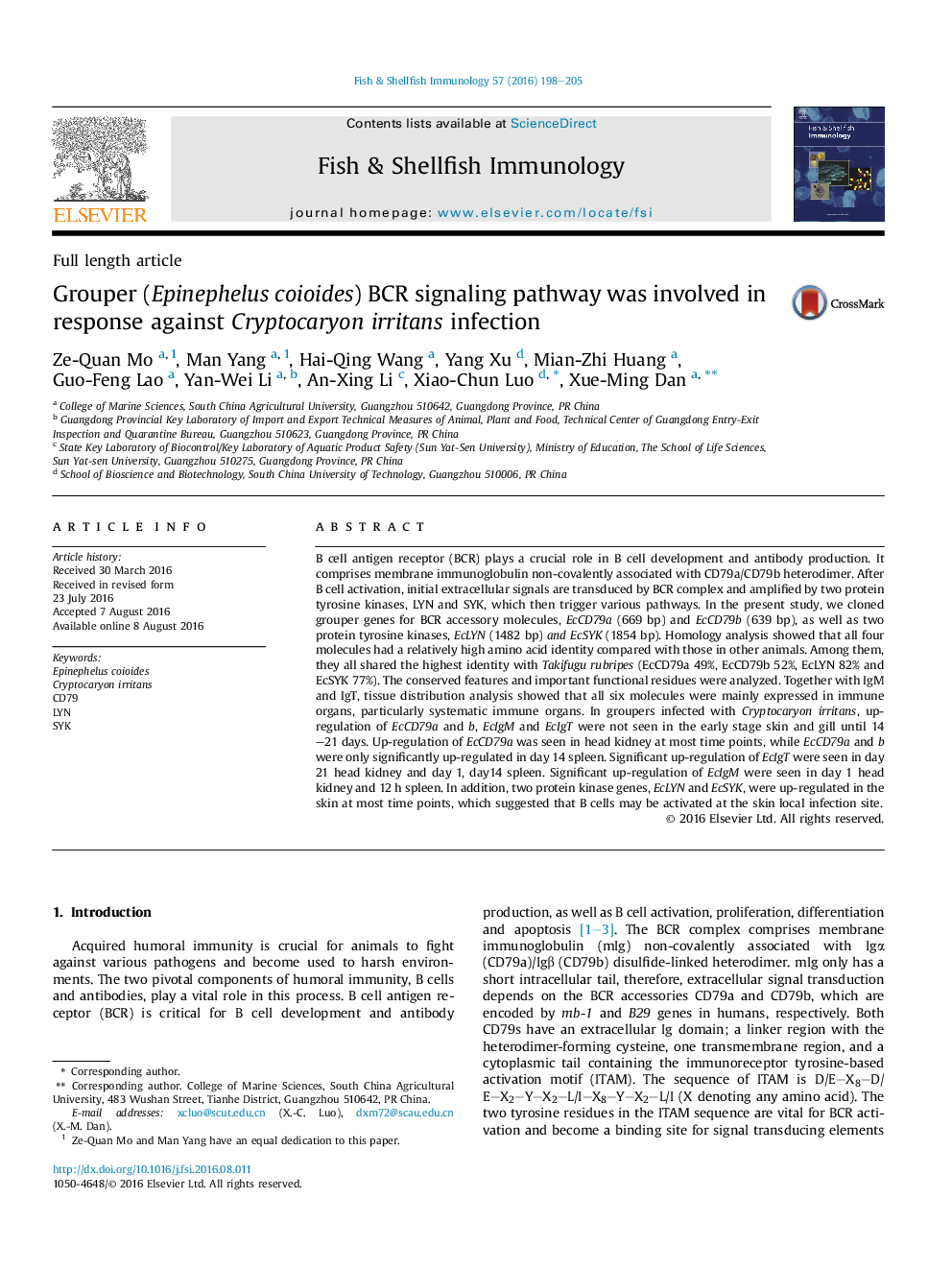| کد مقاله | کد نشریه | سال انتشار | مقاله انگلیسی | نسخه تمام متن |
|---|---|---|---|---|
| 2430566 | 1553617 | 2016 | 8 صفحه PDF | دانلود رایگان |

• Four BCR signaling pathway cDNA sequences were identified from grouper.
• EcLYN was significant up-regulation in Cryptocaryonirritans infected skin.
• EcCD79a was significant up-regulation in C. irritans infected head kidney.
B cell antigen receptor (BCR) plays a crucial role in B cell development and antibody production. It comprises membrane immunoglobulin non-covalently associated with CD79a/CD79b heterodimer. After B cell activation, initial extracellular signals are transduced by BCR complex and amplified by two protein tyrosine kinases, LYN and SYK, which then trigger various pathways. In the present study, we cloned grouper genes for BCR accessory molecules, EcCD79a (669 bp) and EcCD79b (639 bp), as well as two protein tyrosine kinases, EcLYN (1482 bp) and EcSYK (1854 bp). Homology analysis showed that all four molecules had a relatively high amino acid identity compared with those in other animals. Among them, they all shared the highest identity with Takifugu rubripes (EcCD79a 49%, EcCD79b 52%, EcLYN 82% and EcSYK 77%). The conserved features and important functional residues were analyzed. Together with IgM and IgT, tissue distribution analysis showed that all six molecules were mainly expressed in immune organs, particularly systematic immune organs. In groupers infected with Cryptocaryon irritans, up-regulation of EcCD79a and b, EcIgM and EcIgT were not seen in the early stage skin and gill until 14–21 days. Up-regulation of EcCD79a was seen in head kidney at most time points, while EcCD79a and b were only significantly up-regulated in day 14 spleen. Significant up-regulation of EcIgT were seen in day 21 head kidney and day 1, day14 spleen. Significant up-regulation of EcIgM were seen in day 1 head kidney and 12 h spleen. In addition, two protein kinase genes, EcLYN and EcSYK, were up-regulated in the skin at most time points, which suggested that B cells may be activated at the skin local infection site.
Journal: Fish & Shellfish Immunology - Volume 57, October 2016, Pages 198–205